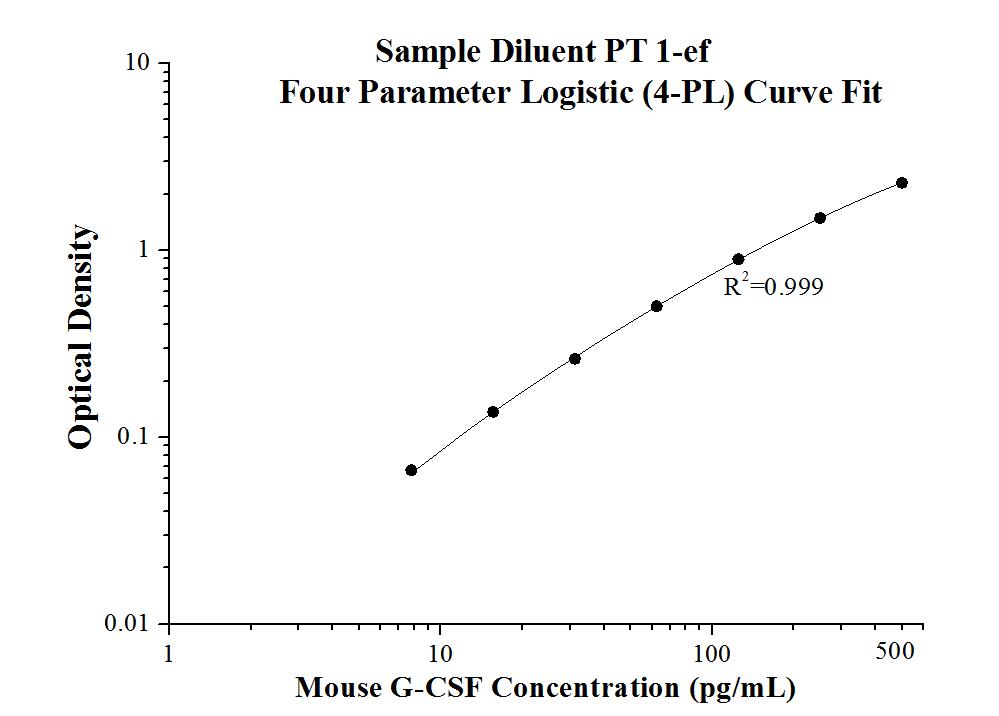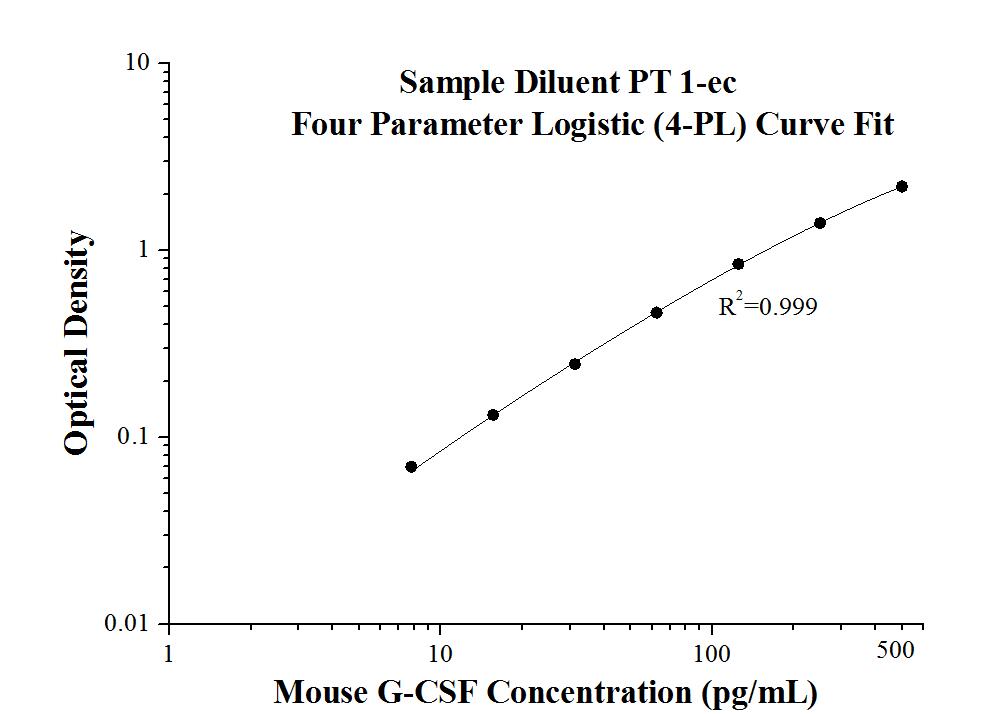Mouse G-CSF ELISA Kit
Validation Data Gallery
Product Information
KE10025 is a solid phase sandwich Enzyme Linked-Immuno-Sorbent Assay (Sandwich ELISA). The Mouse G-CSF ELISA kit is to be used to detect and quantify protein levels of endogenous mouse G-CSF. The assay recognizes mouse G-CSF. An antibody specific for mouse G-CSF has been pre-coated onto the microwells. The mouse G-CSF protein in samples is captured by the coated antibody after incubation. Following extensive washing, another antibody of biotinylated specific for mouse G-CSF is added to detect the captured mouse G-CSF protein. For signal development, Streptavidin-HRP is added, followed by Tetramethyl-benzidine (TMB) reagent. Solution containing sulfuric acid is used to stop color development and the color intensity which is proportional to the quantity of bound protein is measurable at 450 nm with the correction wavelength set at 630 nm.
| Product name | Mouse G-CSF ELISA Kit |
| Tests | 1 X 96 well plate |
| Sample type | Serum, Plasma, Cell culture supernatants |
| Assay type | Sandwich |
| Sensitivity | 0.8 pg/mL |
| Range | 7.8-500 pg/mL |
| Reactivity | Mouse |
| Tested applications | Sandwich ELISA |
| Gene ID (NCBI) | 12985 |
Recovery
| Sample Type | Average | Range |
|---|---|---|
| Mouse serum | 95% | 74%-127% |
| Cell culture supernatants | 105% | 85%-124% |
IntraAssay
| Sample | n | mean ( pg/mL) | SD | CV% |
|---|---|---|---|---|
| 1 | 20 | 216.2 | 7.1 | 3.3 |
| 2 | 20 | 85.3 | 2.5 | 2.9 |
| 3 | 20 | 8.8 | 0.9 | 9.7 |
InterAssay
| Sample | n | mean ( pg/mL) | SD | CV% |
|---|---|---|---|---|
| 1 | 24 | 209.1 | 10.2 | 4.9 |
| 2 | 24 | 86.2 | 4.6 | 5.3 |
| 3 | 24 | 51.2 | 3.8 | 7.4 |
Background Information
Granulocyte colony-stimulating factor (G-CSF), also referred to as CSF3, is a protective cytokine with anti-inflammatory effects. G-CSF is important in promoting survival of the granulocytic lineage cells and proliferation and migration of neutrophils as well as trophoblast cells. G-CSF acts by binding to its receptor G-CSFR (also called CSF3R), which after binding with G-CSF activates the canonical Janus kinase (Jak)/signal transducer, activator of transcription (STAT) and Ras/Raf/MAP kinase pathways. G-CSF potently stimulates the proliferation and release of peripheral blood progenitor cells into the bloodstream and is therefore used to treat neutropenia after chemotherapy. Furthermore, G-CSF levels are elevated upon intensive exercise leading to increased neutrophil counts, which are predominantly due to delayed neutrophil apoptosis.
Properties
| Storage Instructions | All the reagents are stored at 2-8℃ for 6 months or -20℃ for 12 months. Refer to the protocol for further storage instructions. |
| Synonyms | Csf3, Csfg, G CSF, G-CSF, MGI IG |
Publications
| Species | Sample Type | Title |
|---|---|---|
Nat Commun Overcoming therapeutic resistance in oncolytic herpes virotherapy by targeting IGF2BP3-induced NETosis in malignant glioma | ||
Proc Natl Acad Sci U S A miR-182 targeting reprograms tumor-associated macrophages and limits breast cancer progression. | ||
Exp Hematol Mobilization dynamics of bone marrow hematopoietic stem cells during hematopoietic regeneration | ||
Discov Oncol High-altitude hypoxia exacerbates chemotherapy-induced myelosuppression by lowering serum G-CSF/GM-CSF and regulating apoptosis and proliferation | ||
Front Biosci (Landmark Ed) Quercetin, the Ingredient of Xihuang Pills, Inhibits Hepatocellular Carcinoma by Regulating Autophagy and Macrophage Polarization | ||
Sci Adv Bioactive NIR-II gold clusters for three-dimensional imaging and acute inflammation inhibition |



